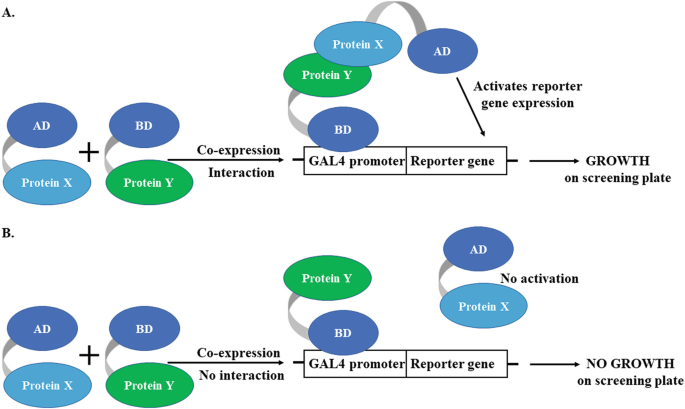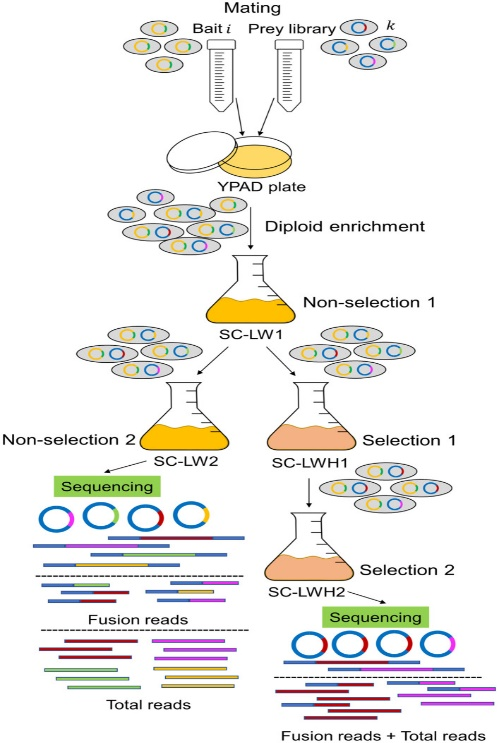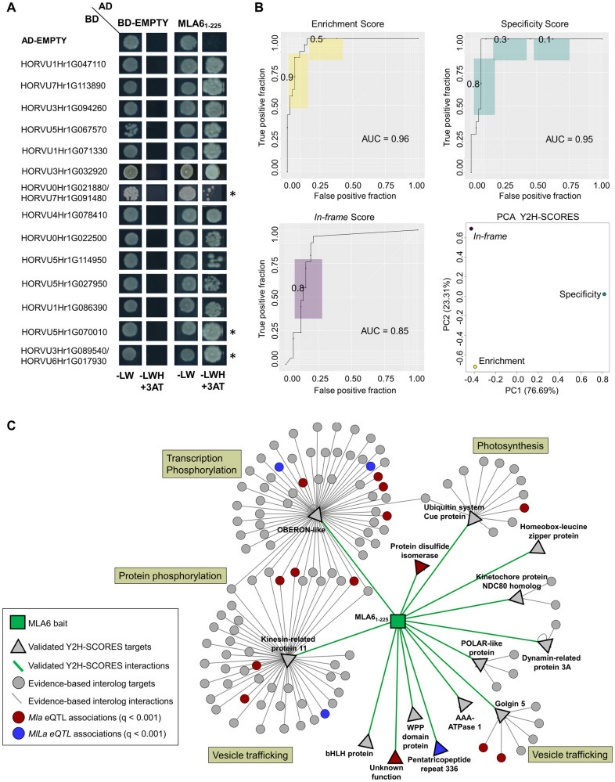2025-02-07 Hits(213)
Yeast Hybridization Technology
The Yeast two-hybrid technique is an experimental system to study the influence of trans-acting factors on eukaryotic gene transcription regulation through yeast genetic analysis. Yeast two-hybrid technology has the characteristics of high sensitivity and simplicity and has been widely used in the screening, identification, verification, and mechanism exploration of protein interaction.
Yeast two-hybridization is a technique for discovering and studying protein-to-protein interactions in living cells with high sensitivity and the ability to detect weak, momentary interactions between proteins, as well as through the expression products of reporter genes. The present research shows that the technique can be used to study the interactions between proteins encoded by mammalian genomes and proteins encoded by higher plant genomes.
Principle
The principle of yeast two-hybrid technology is to fuse protein X with the DNA binding domain (BD), one of the functional domains of transcription factors, and protein Y with the transcriptional activation domain (AD), one of the functional domains of transcription factors. DNA-BD recognizes and binds to upstream activation sequences (UAS) of GAL4-effecting genes, while AD initiates transcription of genes downstream of UAS by binding to other components of the transcriptional machinery. DNA-BD and AD cannot activate the transcriptional response alone, but when they are very close in space, they can activate the downstream promoter of UAS and transcribe the downstream genes of the promoter. Therefore, the BD plasmid (DNA-binding domain containing GAL4) and the AD plasmid (transcriptional activation domain containing GAL4) can be used to verify whether the protein interacts. Two proteins (X/Y protein) were constructed to construct the BD-X plasmid vector and AD-Y plasmid vector respectively, and the two recombinant plasmid vectors were transformed into yeast for expression. If protein X interacts with protein Y, the two fusion proteins interact, thus activating the transcription process and enabling gene expression.

Fig 1: Yeast two-hybrid experimental schematic diagram
(Reference source: Yeast Two-Hybrid Technique to Identify Protein-Protein Interactions | SpringerLink)
Application
The Yeast two-hybrid technique is an important tool to explore protein interaction, which is often used to screen and confirm the interaction between proteins. At present, the application of yeast two-hybrid technology is as follows:
(1) Preliminary screening and verification of interacting proteins
The possible protein interaction was verified by using a four-deficient yeast strain with strict growth conditions, because the growth of the four-deficient yeast strain on the medium depended on the protein interaction, to achieve the purpose of yeast two-hybrid verification.
(2) Network construction of protein interaction
By using the yeast two-hybrid verification system, the protein interacting with the target protein can be screened through the intersection of the screening results of two deficient yeast strains and four deficient yeast strains, to construct a more comprehensive protein interaction network. Proteins with known functions can also be used to screen cDNA libraries to find proteins that interact with them, and then predict the action network of the gene.
Yeast two-hybrid technology has many advantages: (1) It does not need to purify protein steps and saves reach time; (2) It's representative of what's going on inside the cell because when you test it inside a living cell; (3) It can detect weak or temporary interactions between proteins; (4) It’s built from a wide range of sources for the construction of the database, such as materials from different tissues, organs, cell types and differentiation periods; (5) It can analyze proteins of different subcellular sites and functions such as cytoplasm, nucleus and membrane binding proteins.
Yeast two-hybrid technology has many advantages, but the operation of this technology is complicated, yeast two-hybrid verification is prone to false positive or false negative results, and can not judge the intensity of protein interaction, so other technical means are needed to assist the verification.
Case Result Diagram
Velasquez-Zapata V et al. used a new generation of yeast two-hybrid Y2H-SCORES technique to analyze and identify the targets interacting with MLA6 NLR immune receptors.

Fig 2: Flowchart of Y2H-SCORES
(Reference source: Next-generation yeast-two-hybrid analysis with Y2H-SCORES identifies novel interactors of the MLA immune receptor)

Fig 3: Interaction of MLA6 NLR receptors with barley targets
(Reference source: Next-generation yeast-two-hybrid analysis with Y2H-SCORES identifies novel interactors of the MLA immune receptor)
Based on the above, KMD Bioscience can provide a two-yeast hybridization experimental service, providing high-quality experimental data and support to facilitate your research or project. In addition, KMD Bioscience also provides yeast single-hybrid systems, yeast three-hybrid systems, split ubiquitin Y2H systems, and other services to meet the experimental needs of different customers.
References:
[1] Velásquez-Zapata V, Elmore JM, Banerjee S, et al. Next-generation yeast-two-hybrid analysis with Y2H-SCORES identifies novel interactors of the MLA immune receptor [J]. PLoS Comput Biol. 2021, 17(4): e1008890.
[2] Fields S, Song O. A novel genetic system to detect protein-protein interactions [J]. Nature. 1989, 340(6230): 245-256.
[3] Brückner A, Polge C, Lentze N, et al. Yeast two-hybrid, a powerful tool for systems biology [J]. International journal of molecular sciences, 2009, 10(6): 2763-2788.